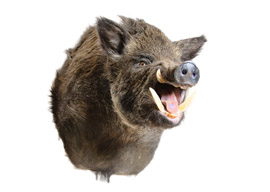
July 23, 2016

Source: Bigstock
The juxtaposition of the guinea pig with the knuckle-duster, the latter being the perfect symbol of the use of violence as a first rather than a last resort, was deeply ironical, then. I was reminded of the scene in Some Like It Hot in which men jump out of the huge cake brought as a peace offering and shoot the guests dead, the subsequent explanation of their demise being that “there was something in that cake that didn”t agree with them.” Something in the guinea pig wouldn”t have agreed with whomever was struck by it with the knuckle-duster inside.
My classmate’s ambition to be a taxidermist played a small part in my intellectual awakening, for it raised a couple of questions in my mind that I have still not answered to my full satisfaction. How many taxidermists does a society need, and how is the supply to be adjusted to the demand?
From thinking about the number of taxidermists a society needs, it was a short step to wondering about the nature of human need itself. It may be that I dearly want a stuffed owl or fox in a glass case, as so many Victorians appear to have wanted (for hardly any bric-a-brac shop is complete without a moth-eaten owl in a glass case), but could I be said really to need one? And if I don”t really need one, can the person, or rather the activity of the person, who supplies me with it really be needed?
But then again, I don”t need the vast majority of what I want, and therefore all the activity of the people required to supply me with it (and all that billions of people want but don”t need) is unnecessary. In other words, the vast majority of human effort is futile, and Ecclesiastes got it right: All is indeed vanity.
Nothing is more vital to the continuation of our system, therefore, than the willing acceptance of triviality and futility. They are what make the world go round. There is no getting off the treadmill, and taxidermy is a metaphor for our existence. To put it in contemporary British vernacular, mankind is stuffed.